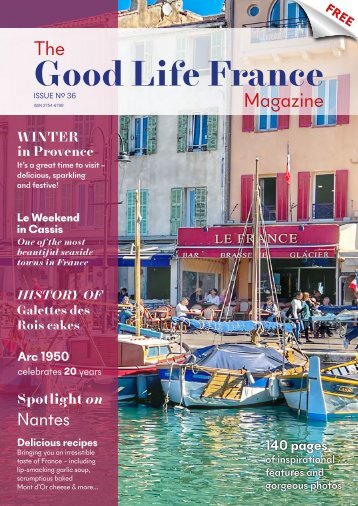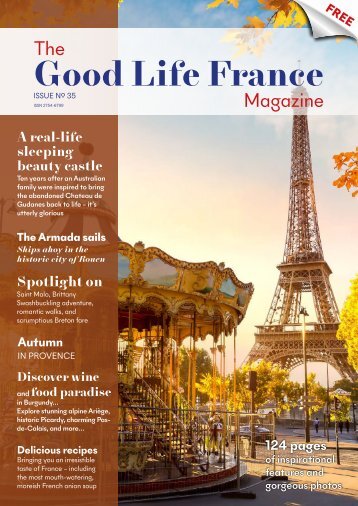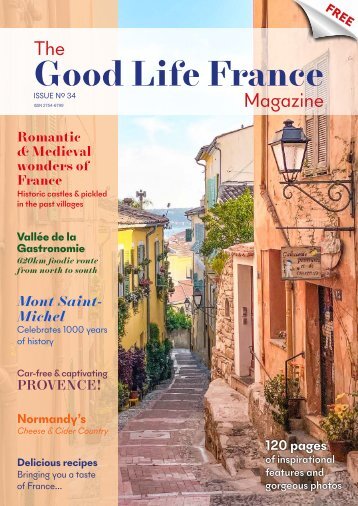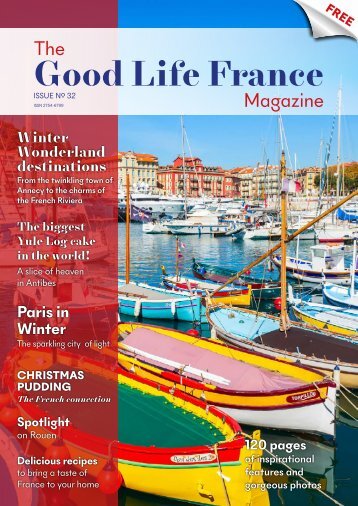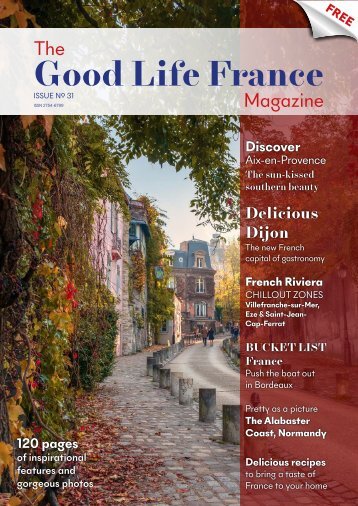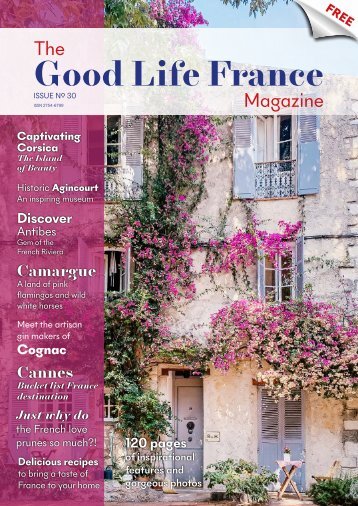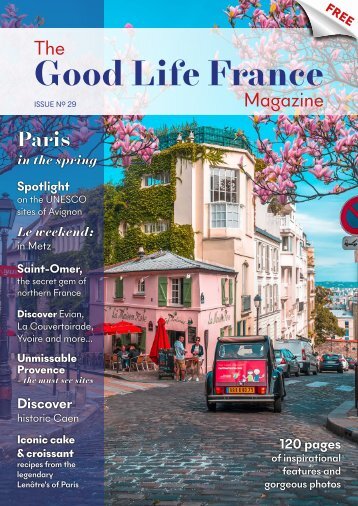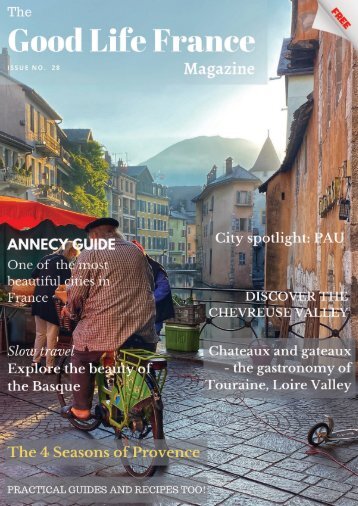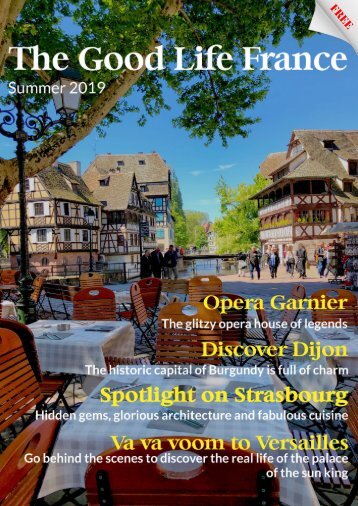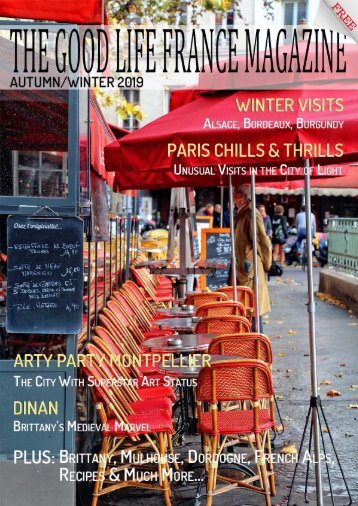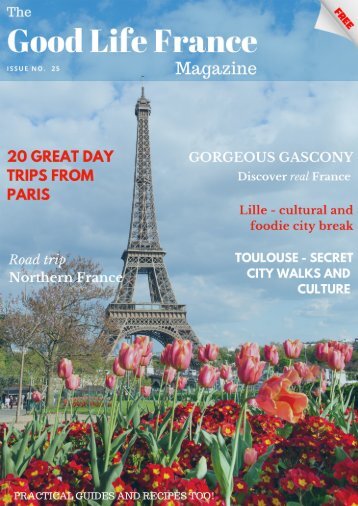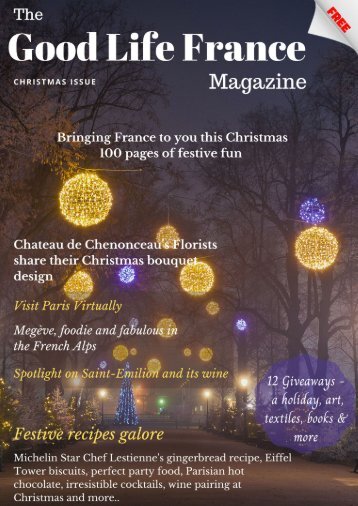
The Good Life France Magazine
The Good Life France Magazine brings you the best of France - inspirational and exclusive features, fabulous photos, mouth-watering recipes, tips, guides, ideas and much more...
Published by the award winning team at The Good Life France
Issue No. 16
Long ignored by mass
Long ignored by mass tourism, this tranquil region is fast becoming France's hot new destination says Sue Aran who lives in the Gers where she runs French Country Adventures guided tours of Gascony… Where is Gascony? The area of Gascony is bordered on the west by the Atlantic Ocean, the south by the Pyrénées mountains, the east by Toulouse and the north by the vineyards of Bordeaux. It’s a region that’s sprinkled with ancient Roman ruins and humble bastides and it remains as historically rich as it was in medieval times. Unchanged since the 1950s by industry, tourism or major highways, its landscape has remained agricultural for centuries. Soft white clouds languish in deep blue skies above fields of bright yellow sunflowers, sun-kissed vineyards that stretch to the horizon, and velvet green pastures dotted with gaggles of geese and cream-coloured cows, Gascony’s appeal is seductively earthy, full-bodied and lusty, like its wines. It’s a culinary heartland of garlic, foie gras, duck confit, and France’s oldest brandy, Armagnac, and is as authentically farm-to-table as it gets. Gascony entered recorded history during the reign of Julius Caesar as the core territory of Roman Aquitania. Its fertile soil was nourished by the rivers descending from the Pyrénées to the plains below. In his memoir, Caesar described the machinations occurring during his nine years of fighting the Gauls, an alliance of nine tribes which included the Vascones. The Vascones defined a confederacy of non-Romanised tribes who inhabited both sides of the Pyrénées and shared common traditions. By the late 6th century several of their tribes moved north, over the Pyrénées, and down into the territory they called Vasconia, which now comprises the seven departments in southwestern France called
Salies-de-Béarn Salies-de-Béarn is a heady mixture of the Spanish and French Basque regions, rich in local gastronomie de terroir and robust wines. Salies is a picture-perfect village of vertiginous, gabled houses overlooking the Saleys River. Known from the Bronze Age as the ‘Salt City’ for having an underground water source seven times saltier than the ocean, its signature product was lucrative until the mid-19th century, when competition from the Languedoc and the Camargue weakened the salt market dramatically. Salies then reinvented itself as a spa village. In addition to the virtues of its salt, the local water contains more magnesium than any other natural spring in the world. Its spa is still in operation, offering health, beauty and fitness regimes. Gascony. The remaining portion in Spain became the Basque Country. As were their forebears, Gascons today are known to be independent, brave, hardy, boastful and, most of all, welcoming. Those visitors who venture into Gascony tend to follow the few well-publicised tourist paths such as Lupiac, the birthplace of D’Artagnan, one of the Three Musketeers made famous in the novel by Alexandre Dumas, or Lourdes, which, following the Marian apparitions of 1858, became a Catholic pilgrimage site. Undiscovered Gascony If, like many, you have a desire to escape the routine, here you’ll find an undiscovered paradise with some of the most spectacular scenery in France. Gascony is truly a land that time forgot. . There are many recreational choices to match your individual taste, including cycling, fishing, kayaking or rafting on the beautiful Gave de Pau and Gave d’Oloron rivers nearby. Whether you’re vacationing or just passing through, you’ll want to time your visit to include lunch at Les Fontaines Fleuries. The menu at this fabulous restaurant is sourced from local producers, prepared in-house, and is what memories are made of.
- Page 3 and 4: Bonjour and welcome to the autumn i
- Page 5 and 6: contents p.56 p. 8 p. 48 Features p
- Page 7: P. 82 Expats 90 Buying French Prope
- Page 10 and 11: Photo: IheartFrance Discover the hi
- Page 12 and 13: The Flower master of the Chateau de
- Page 14 and 15: The gardener at the Chateau de Chen
- Page 16 and 17: “Do you ever feel anything ghostl
- Page 18 and 19: Amboise in the Loire is dominated b
- Page 20 and 21: This bijou chateau (at least by the
- Page 22: “I believe that great happiness a
- Page 26 and 27: Photo: Geraldine Baker Chateau of C
- Page 28 and 29: Photo: @Toinou1375 Chateau du Chamb
- Page 30 and 31: Chateau de Blois Not far away from
- Page 32 and 33: Insider's Guide to G
- Page 36 and 37: Lectoure was the first capital of t
- Page 38 and 39: Nérac Once home to the court of Ki
- Page 40 and 41: Spotlight on... Montpellier Janine
- Page 42 and 43: What to see in Montpellier The pede
- Page 44 and 45: If you only have time to go to one
- Page 46 and 47: Port Marianne The fast-rising Port
- Page 49 and 50: Isle-sur-la-Sorgue in Provence make
- Page 52 and 53: When you’re done rummaging Throug
- Page 54 and 55: LYON A shade under 2 hours on a fas
- Page 56 and 57: Photo: Vicke Cunningham Autumn in F
- Page 58: Fountain Festival A chance to enjoy
- Page 61 and 62: Chateau Grignan Of course, you can
- Page 63 and 64: Grignan is a surprise and there’s
- Page 65 and 66: into Corinne from Auvergne Rhône-A
- Page 67 and 68: This must be it! Sure enough a hand
- Page 69 and 70: Place Charles de Gaulle is a good s
- Page 72 and 73: Take a hike in the largest national
- Page 74 and 75: Next morning it’s cold and crispy
- Page 77 and 78: It was to be a combined holiday of
- Page 79 and 80: Day 3: It all falls apart The excep
- Page 81 and 82: Top Tips for dog friendly Ski Holid
- Page 83 and 84: Honfleur at dusk by Robin Cox - how
- Page 85 and 86:
E AWAYS Win a copy of C’est Bon:
- Page 87 and 88:
She has learned to tie a scarf, bec
- Page 89 and 90:
Oh, my mom could navigate her 70s c
- Page 91 and 92:
ADVICE YOU CAN TRUST Get profession
- Page 93:
and even, in some resorts, free ski
- Page 96 and 97:
Charlotte Corner and Marcus Gough a
- Page 98:
“We run our holidays from our bas
- Page 101 and 102:
“Several glasses in and one of us
- Page 103 and 104:
FIND YOUR DREAM HOME IN DORDOGNE Lo
- Page 105 and 106:
Can I have my UK pension paid in Fr
- Page 107:
“Because it will EXPLODE. I know
- Page 110:
y Barbara Pasquet-James
- Page 116:
What a roller coaster summer it has
Inappropriate
Loading...
Mail this publication
Loading...
Embed
Loading...



